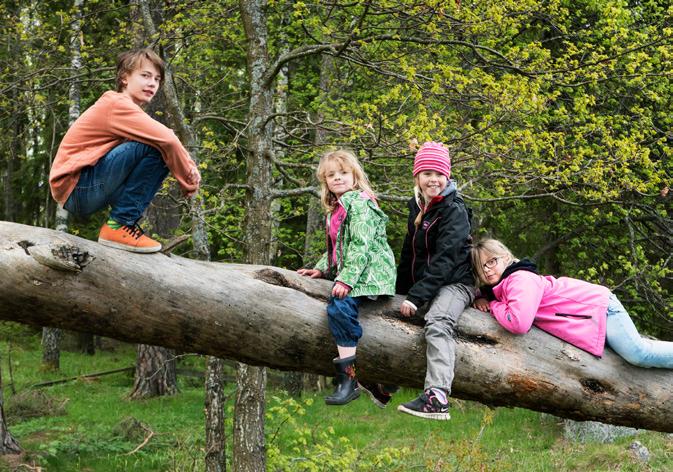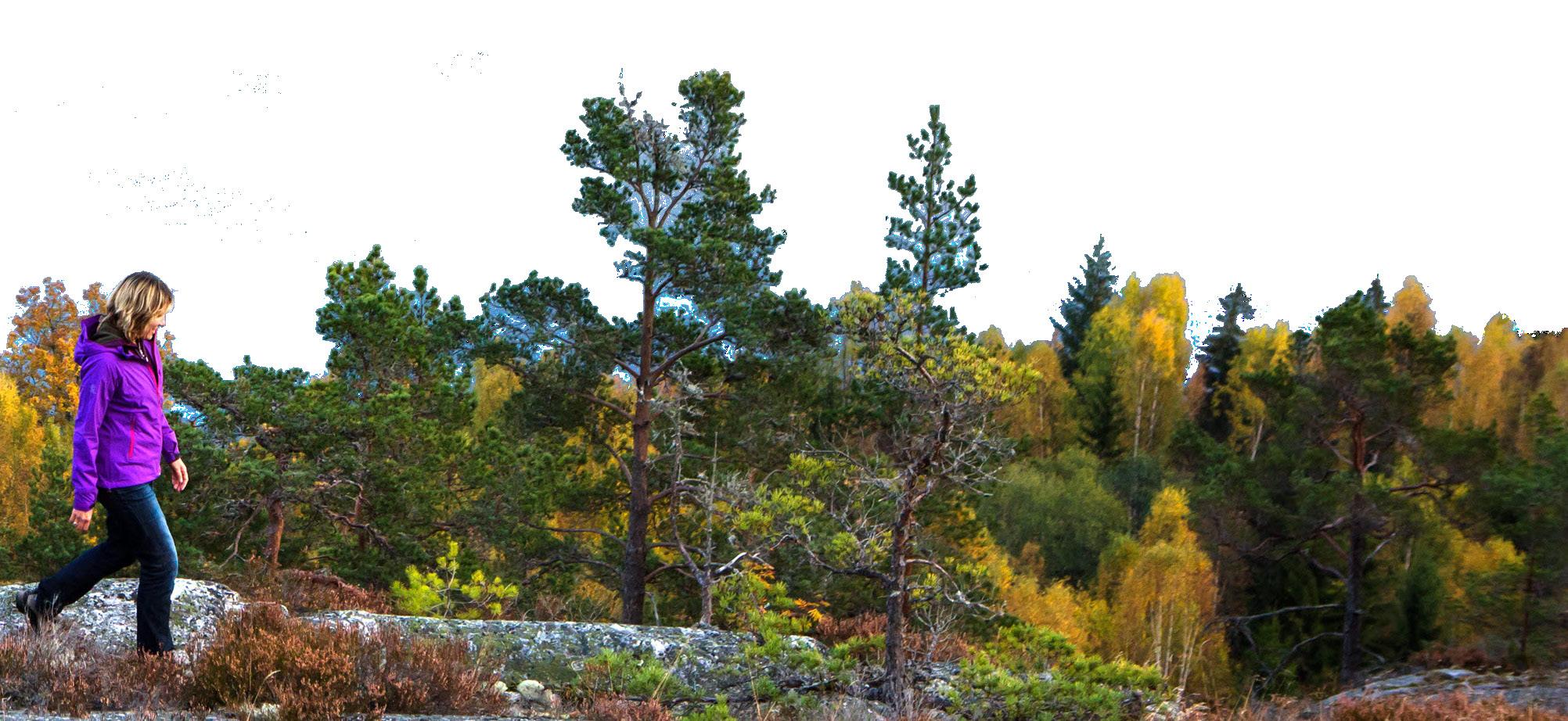
5 minute read
Feature
The World’s Largest Bed & Breakfast: Sweden and the Freedom to Roam
Three years ago, Sweden’s board of tourism partnered with Airbnb, the popular home rental website, to turn the entire country into a listing. The partnership produced a video advert, in which a narrator speaks over footage of the wild Scandinavian landscape, stating that “in Sweden we have this thing called Freedom to Roam. It is a right protected by law that allows me to sleep and eat and walk pretty much anywhere I want. And now, you can too. Because we listed the entire country on Airbnb.” For those unfamiliar with the law described in the video, it sounds like a marketing gimmick. But freedom to roam is a rough translation of allemansrätten, which literally means “every man’s right.” It is a pillar of Swedish culture and another example of Swedish exceptionalism.
In its essence, the freedom to roam makes private property semi-public by giving any person on Swedish soil the right to travel almost completely freely across the
By Marcus Andersson
land. One is not permitted to wander into the immediate vicinity of a household or damage cultivated enclosures, but all wilderness is open to anyone who comes across it. What’s more, allemansrätten grants a list of rights in addition to free access. Under the law, one is allowed to pitch a tent and camp for a couple of days; make a campfire, collect flowers, mushrooms and berries; catch fish in the major bodies of water; access any beach; swim in lakes; and drive on private roads, regardless of whether the area is public or owned by a property holder. This privilege is extended to citizens and tourists alike, and is guided by the maxim inte störa, inte förstöra, or “don’t disturb, don’t destroy.”
The history of the freedom to roam dates back to the medieval period. In the 1200s, Sweden didn’t have the infrastructure to provide proper food and lodging for travelers, so it was generally accepted that, even on private property, travelers could set up camp, feed themselves off the land or water sources, etc. From the mid-19th century until the 1940s, this ancient tradition was given even more explicit shape in conjunction with the rise of friluftsliv, a movement that celebrated the importance of spending time outdoors. By 1937, Sweden developed a formal articulation of allemansrätten, but it took until 1994 for it to be codified in the constitution as a foundational right. Throughout Swedish history there have been debates at the Riksdag (Parliament), with cases spanning from 1889 until 2010, where opponents of the practice have tried to regulate it.
Interestingly, the freedom to roam is a constitutional right but lacks a robust legal definition outlining exactly what is and isn’t acceptable. There are minor restrictions, but even those are only loosely described. The principal regulation on allemansrätten is the idea of hemfridszon or the “home peace zone.” Travelers are not allowed to camp within an uncomfortably close proximity to a
household, and are asked to respect the owner’s zone of peace (often set at around 230 feet from the house). But Swedish law encourages individuals to gauge the appropriate distance themselves: if there’s a fence around the home, then anywhere outside the fence is reasonable. Natural boundaries that separate a traveler’s campsite from the home are also useful, such as streams, hedges, and boulders. On the west coast of Sweden, however, houses are often built close to each other. This leads to a shrinkage of the hemfridszon, meaning that, even if a property owner feels a camper has come too close for comfort, it is difficult to determine whose side the law defends.
Since the freedom to roam is vague from a legal perspective, it is not surprising that it is challenging to police it. Naturvårdsverket, or the Environmental Protection Agency, is primarily responsible for disseminating information about how to take advantage of the freedom in a responsible way, offering online materials and contributing to the school system’s curriculum. NGOs also play an important part in sustaining the tradition through education and coordinating activities in Nature. Groups like Svenskt Friluftsliv, Friluftsfrämjandet and Korpen all ensure that future generations of Swedes will adhere to the philosophy of “don’t destroy, don’t disturb.”
Swedish children using the right of public access (Allemansrätten) to play in the woods. Photo: Ulf Lundin/imagebank.sweden.se


While Sweden has one of the most impressive legacies of allemansrätten, it is not the only nation to offer such an entitlement to its people. Finland has a similar history of freedom to roam, which dates back at least six hundred years. Norway passed legislation granting the right to free access sixty years ago with its Friluftsloven (outdoor laws). Denmark grants a limited version of these rights, ensuring some access to nature and strongly protected access to beaches. Iceland and Estonia also guarantee some level of freedom, and Scotland passed a law within the last decade granting similar rights to allemansrätten.
Even though the idealism of freedom to roam is well intentioned, it inevitably leads to dilemmas. One such problem is tourists’ exploitation of the law, which is actively encouraged by the aforementioned Visit Sweden/Airbnb ad campaign. Social media enable tourists to sensationalize locations in the Swedish landscape, driving high volumes of traffic through delicate ecosystems. This presents a hazard to property investment on behalf of the landowner and a sustainability issue from an environmental perspective. Another complication with allemansrätten is berry picking for profit, as harvesters have established camp sites on private property for durations that exceed the recommended couple of days. Furthermore, companies that offer horseback tours and similar ventures use private property to generate profit, since riding horses is also protected by the freedom to roam. Finally, landowners constantly have to monitor what qualifies as hemfridszon, since not all travelers follow the “don’t destroy, don’t disturb” maxim.
Even though allemansrätten creates issues by keeping Swedish land semipublic, many Swedes want to protect its legacy for future generations. Compared to the US, where trespassing on private property can potentially be life-threatening, Sweden’s policies seem almost utopian. 21st-century Sweden, however, has a growing population and steady streams of tourists it needs to address if allemansrätten is to continue to flourish.
The 100-kilometre Pilgrim trail in the province of Dalsland. Photo Credits: Roger Borgelid/ Westsweden.com










